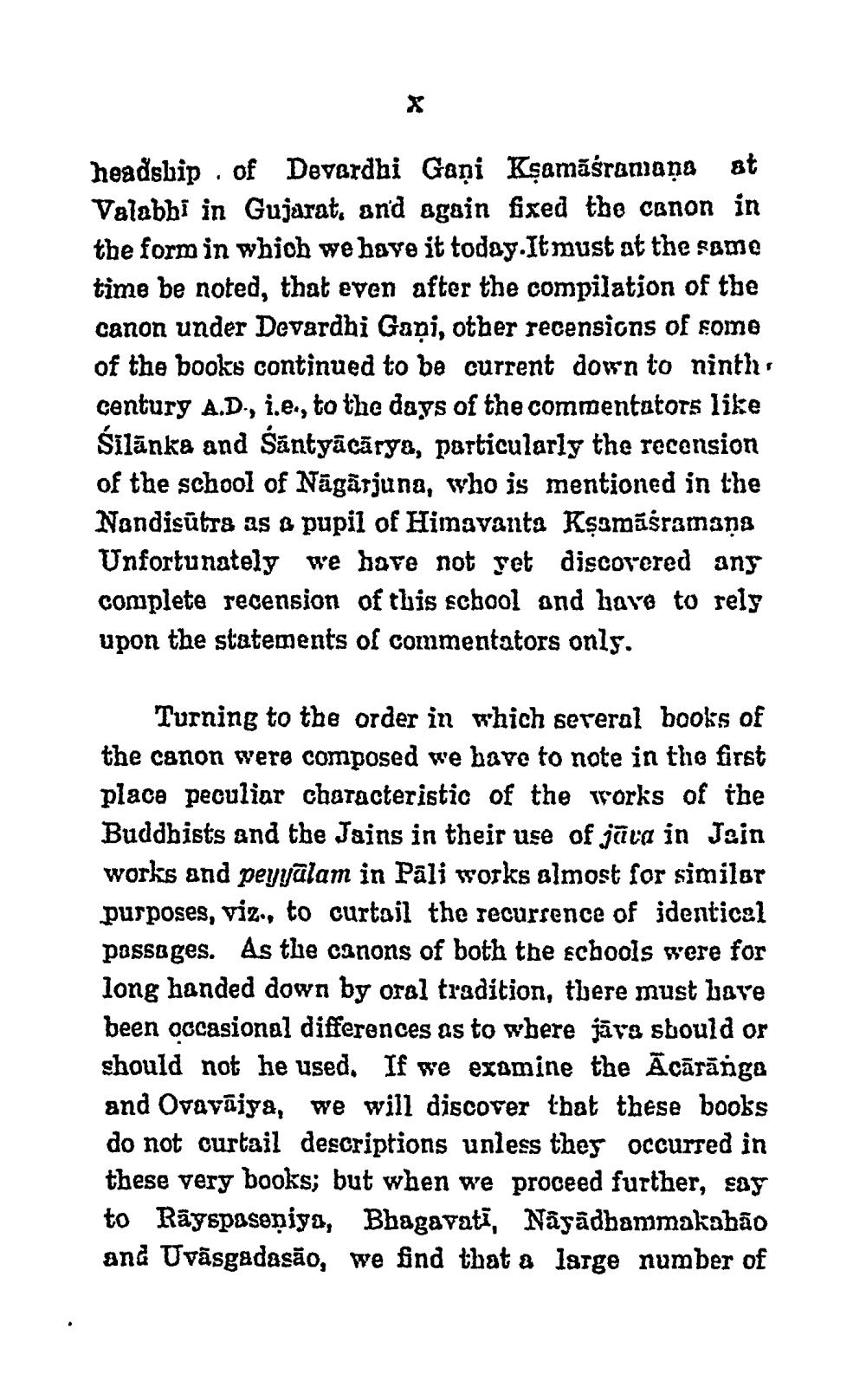________________
X
headship of Devardhi Gani Kṣamāśramaņa at Valabhi in Gujarat, and again fixed the canon in the form in which we have it today.It must at the same time be noted, that even after the compilation of the canon under Devardhi Gaņi, other recensions of some of the books continued to be current down to ninthcentury A.D., i.e., to the days of the commentators like Śilānka and Śāntyācārya, particularly the recension of the school of Nagarjuna, who is mentioned in the Nandisutra as a pupil of Himavanta Kṣamasramaņa Unfortunately we have not yet discovered any complete recension of this school and have to rely upon the statements of commentators only.
1
Turning to the order in which several books of the canon were composed we have to note in the first place peculiar characteristic of the works of the Buddhists and the Jains in their use of jāva in Jain works and peyyālam in Pāli works almost for similar purposes, viz., to curtail the recurrence of identical passages. As the canons of both the schools were for long handed down by oral tradition, there must have been occasional differences as to where java should or should not he used. If we examine the Acarānga and Ovavāiya, we will discover that these books do not curtail descriptions unless they occurred in these very books; but when we proceed further, say to Räyspaseniya, Bhagavati, Nāyādhammakabão and Uvasgadasão, we find that a large number of




